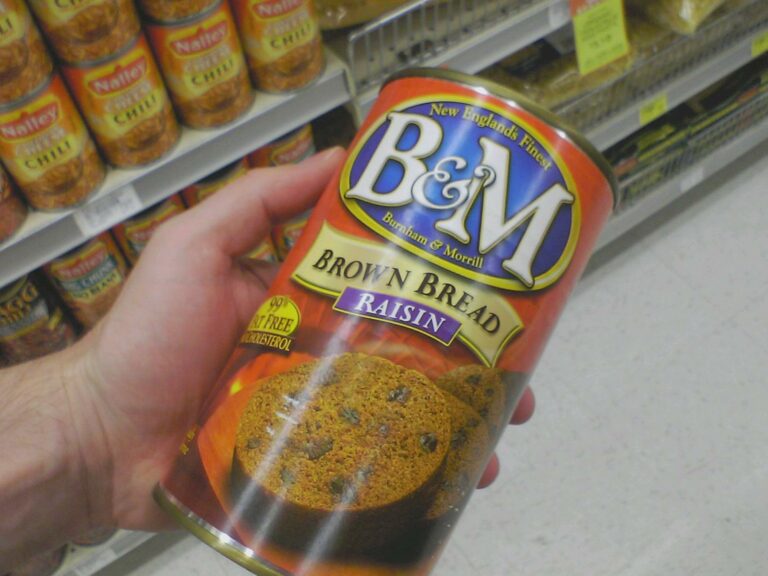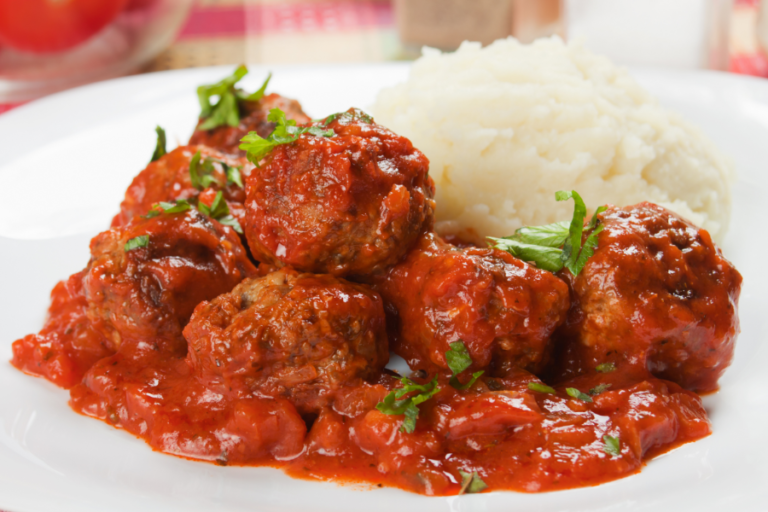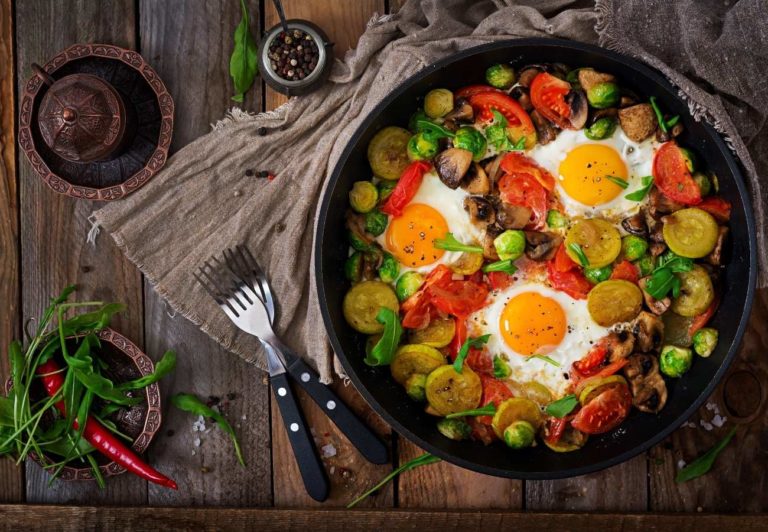Bruneian Food: 9 Traditional Dishes of Brunei
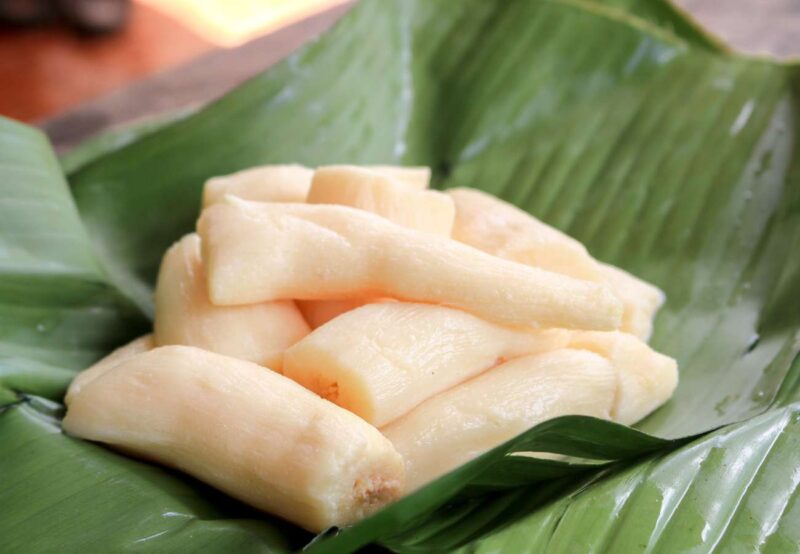
Brunei is a country situated on the north coast of the island of Borneo in Southeast Asia. Aside from its South China Sea coast, it is entirely bounded by the Malaysian state of Sarawak.
The country is divided into two parts by the Sarawak district of Limbang. It is known to be the third largest producer of oil in Southeast Asia and the fourth largest producer of liquefied natural gas in the world.
Brunei’s population is made up of several ethnic groups, including Malay, Chinese, and indigenous, with minorities accounting for the remaining 20.6%. Bruneian cuisine is undoubtedly a reflection of the country’s most populous ethnicities.
The cuisine of Brunei resembles, and is greatly influenced by, the cuisine of bordering countries such as Malaysia, Singapore and Indonesia, with further inspiration coming from countries like India, China, Thailand and Japan.
Fish and rice are considered staple ingredients. Because of the prevalence of the Islamic faith, the food is normally halal, and pork is not allowed nor is alcohol. Beef is expensive and thus not widely available. In rural regions, animals including wild birds, sambar deer and barking deer are hunted.
Bruneian Dishes are usually quite spicy and most are typically consumed with a side of either rice or noodles.
Ambuyat
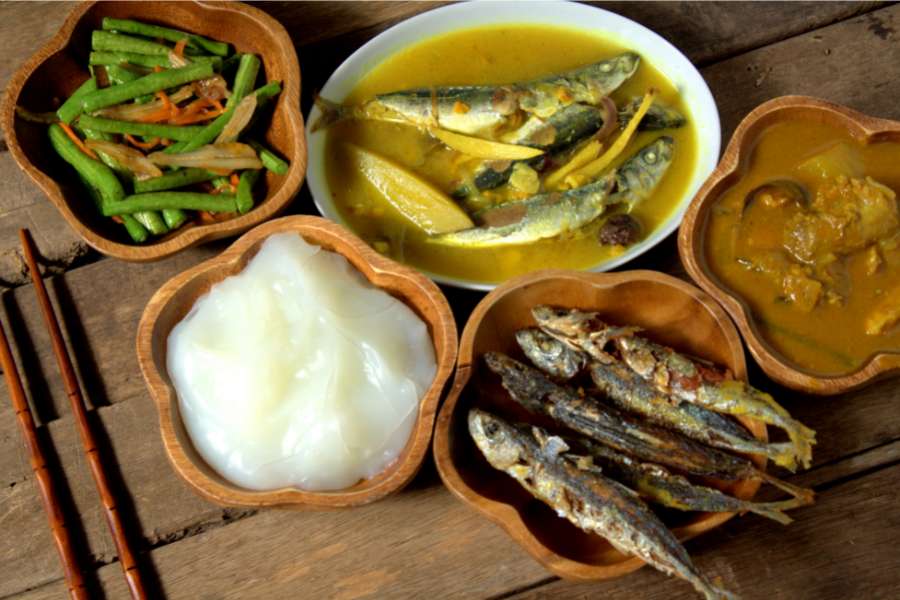
Ambuyat is a dish prepared using the inner trunk of the sago palm. It is basically a starchy, tasteless ingredient, resembling tapioca starch.
Ambuyat is considered the national dish of the country. It is also widely consumed in the Malaysian states of Sarawak, Sabah and the federal territory of Labuan, where it is occasionally referred to as ‘linut’.
Ambuyat is usually eaten using a bamboo chopstick known as a chandas. It is eaten by rolling the starch around the points and then soaking it in a sauce, of which there are several versions. Tempoyak is a widely popular sauce to go with ambuyat.
Kelupis
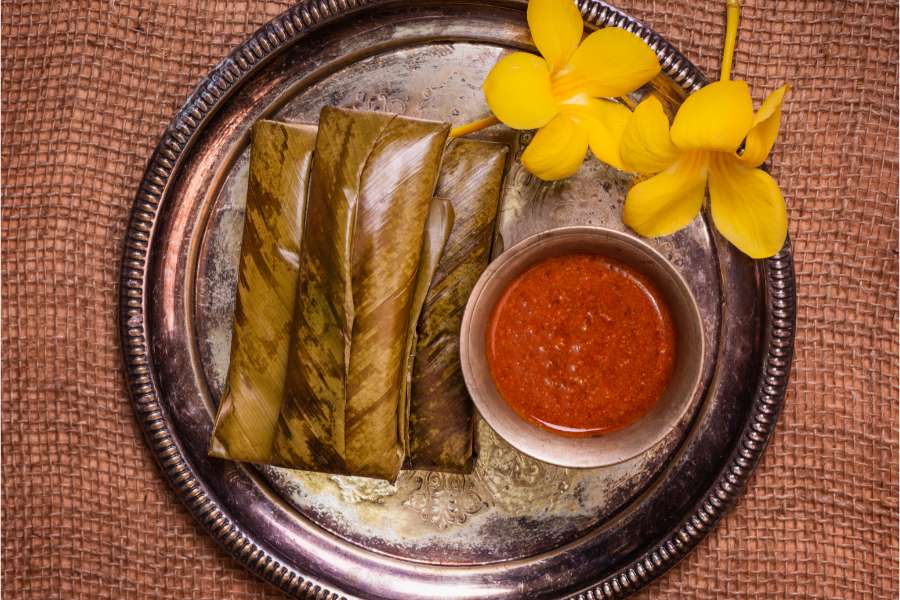
Kelupis is a Bruneian kuih (a mini snack or dessert food normally found in Southeast Asia and China) prepared using rice that is further cooked with several ingredients, such as coconut milk and pandan leaves. It is then wrapped in the leaves of Daun Nyirik. The prepared rolls are further steamed and dried to get rid of additional water.
The name of the dish literally means “glutinous rice rolls” in English. Kelupis is usually prepared by the Bruneian Malay people in the country.
Aside from Brunei, it is popular in the Malaysian states of Sabah and Sarawak, as well as among the Bisaya people. This dish is commonly served at wedding receptions.
Nasi Katok
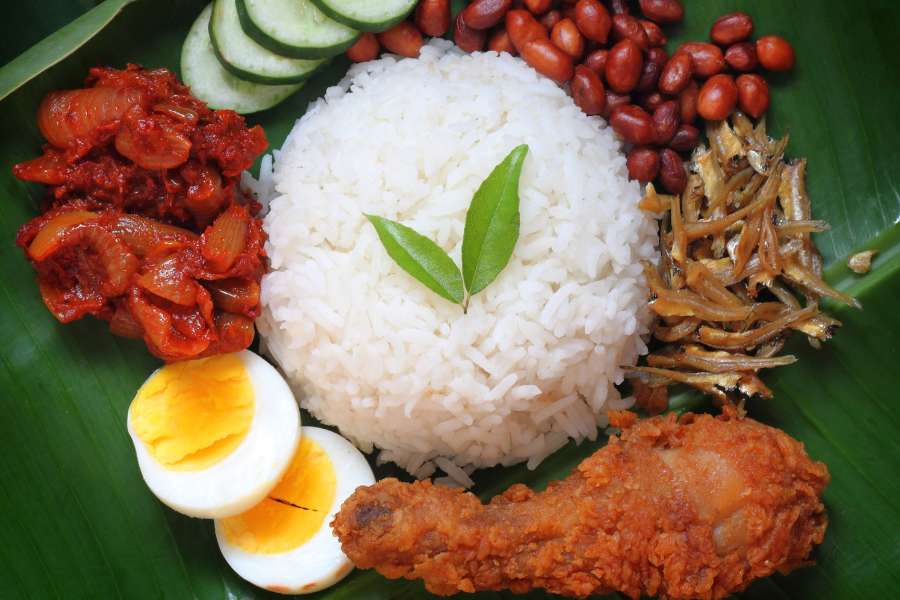
Nasi katok is a simple dish prepared using a mixture of white rice, sambal (an ingredient prepared using blended chillies and other spices), and a piece of fried chicken. It is a popular fast food eaten throughout the country, with some stores serving it non-stop for 24 hours a day.
Nasi translates as rice, while katok literally means to knock, referring to the procedure used for the making of the dish. Except for the three most common ingredients, there are many variations that can be made using a wide range of additional ingredients.
Pulut Panggang
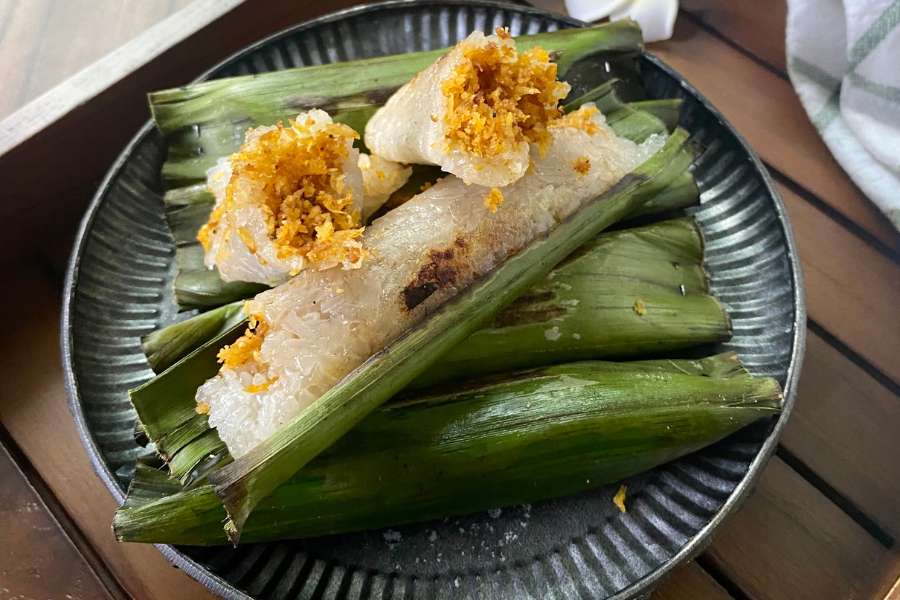
Pulut panggang is a snack prepared using steamed glutinous rice and a spicy sambal filling. It is served wrapped in a banana leaf.
Pulut panggang is popular throughout the country because people enjoy the unique chewy glutinous rice combined with coconut milk and zesty sambal. They are a common dish found at hawker stalls or at a pasar malam.
The word ‘pulut panggang’ literally means grilled glutinous rice in banana leaves in English. Usually eaten for breakfast or during tea time, this dish has also since become a Malaysian favourite.
Bamboo Chicken
Bamboo chicken is a dish prepared by stuffing marinated chicken into bamboo poles. Other ingredients added to the dish include a wide range of spices (such as salt, turmeric powder and red chilli powder), chopped onions, chopped green chillies, ginger paste and garlic paste. It is then shut with the help of bamboo leaves.
Also widely popular in several states of India, this nutritionally rich dish is usually consumed with rice or any type of bread.
Selurut
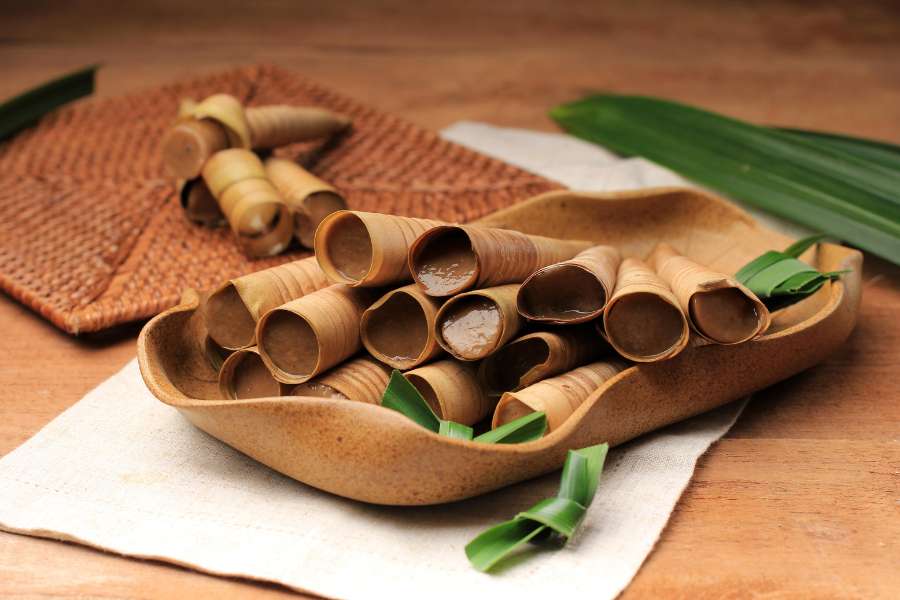
Selurut, also known as clorot, celorot, cerorot or jelurut is a traditional Bruneian sweet snack prepared using steamed rice as the main ingredient. It is cooked with coconut milk and then draped with janur or young coconut leaf, in the shape of a cone.
As well as Brunei, this delicacy is also popular in Indonesia and Malaysia. Selurut has many variations, with some recipes even adding fresh durian fruit or sweet potatoes to the batter. Many people also add eggs.
Kuih
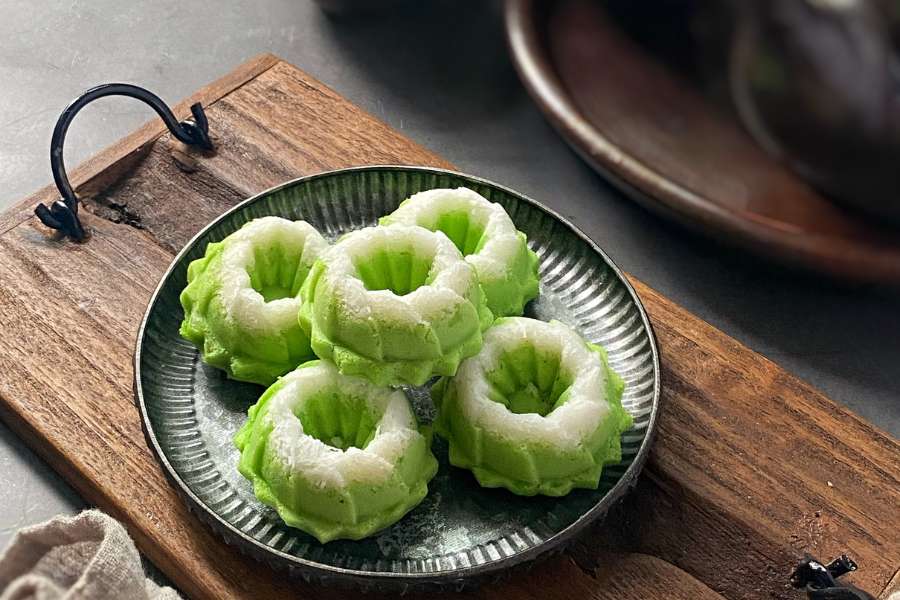
Kuih is an extensive term used for mini desserts or snacks that include items like cakes, cookies, dumplings, pudding, biscuits, or pastries. They are typically prepared using rice or glutinous rice.
Also widely popular in countries like Singapore, China, Malaysia and Indonesia, these dishes are generally served during festivals such as Chinese New Year, Hari Raya etc. However, they are also generally eaten as a sweet treat during the day.
Tapai
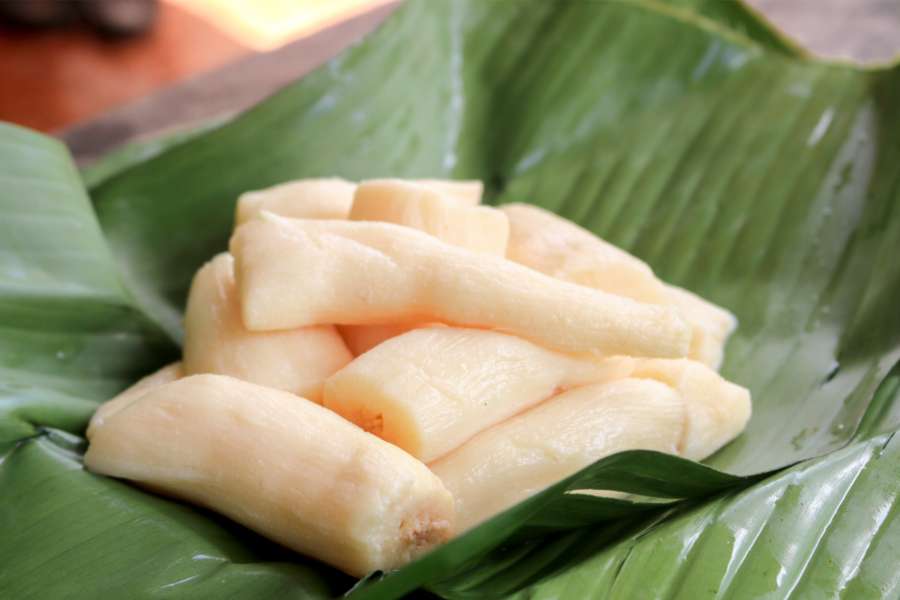
Tapai is an extravagant Bruneian wrap with a sweet and sour flavor, prepared using a mixture of sugar, laru and Siam rice. The blend is then covered in Nipah leaves. The preparation is a lengthy process.
Tapai is generally prepared using white rice or glutinous rice, but one can also use different varieties of carbohydrate sources, such as cassava and potatoes. Tapai can be found all over Southeast Asia, typically in Austronesian cultures and in several regions of East Asia.
Pisang Goreng
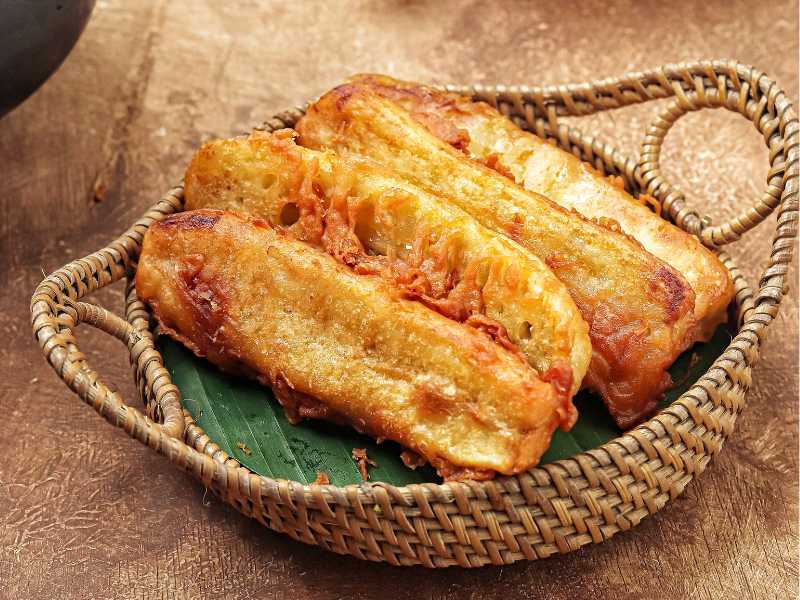
Pisang goreng is a snack consisting of bananas cut into pieces, dipped in batter and deep fried. The batter is made from rice flour, sugar, baking powder, water and salt.
They are deep fried until golden, creating a crispy exterior and a soft creamy inside. They are served, sometimes with a dipping sauce.


